In the world of perfumery and aromatherapy, essential oils and perfumed oils offer an infinite palette of fragrances and olfactory sensations.
In this article, we'll explore the many facets of essential oils and fragrance oils, delving into their fascinating history, discovering their varied uses and sharing all our practical tips for integrating them seamlessly into your daily life. Whether you're new to perfume or a seasoned expert looking for inspiration, you'll find a valuable source of information and inspiration here!
Join us on this fragrant escape...
Contents
(11).jpg)
Our collections of perfumed oils and essential oils
History of essential oils and fragrance oils
History of Fragrance Oils
Fragrance oils have a long history dating back thousands of years. In documented history, ancient Egypt is often considered one of the earliest birthplaces of perfumery; it was used in religious rituals, body care and embalming processes. The ancient Egyptians used herbal fragrance oils and other natural substances to create exquisite perfumes that symbolized luxury and divinity.
- In ancient times :
The use of scented oils dates back to ancient times, where they were often associated with religious rituals, medicinal practices and body care. Ancient civilizations, such as Egypt, Mesopotamia, Greece, and Rome, used fragrant oils derived from plants, resins, and other natural substances to create perfumes, ointments, and balms.
- In the Middle Ages and the Renaissance:
During the Middle Ages in Europe, the use of scented oils was influenced by trade with the Middle East. The Crusades introduced new perfumes to Europe, and distillations were perfected to extract fragrant oils from plants.
The Renaissance marked a period of renewal in the art of perfumery in Europe. Perfumes became symbols of luxury and social status, used by the nobility and the bourgeoisie.
- In the modern era:
In the 19th century, with the advent of modern chemistry, new techniques were developed to synthesize odorous compounds, paving the way for mass production of perfumes.
In the 20th century, the perfume industry grew exponentially with the development of iconic perfumes and the marketing of scented products around the world.
Today, fragrance oils are used in a variety of products, from perfumes and personal care products to household products and scented candles.
The history of perfume oil is therefore a rich and diverse one, testifying to the continuing importance of fragrances in human society throughout the ages. Fragrance oils have become essential ingredients in many perfumery, personal care and household products. Their popularity continues to grow due to their versatility, durability, and ability to evoke sensations through the sense of smell alone
History of essential oils
The history of essential oils dates back to Antiquity, where ancient civilizations already used aromatic plants for their medicinal, cosmetic and ritual properties.
- In ancient civilizations: The first traces of the use of essential oils date back to ancient Egypt, where priests used scented oils in religious rituals and embalming. Essential oils were also used in skin care and to scent cosmetics. The Greeks and Romans also adopted the use of essential oils, using them for medicinal and cosmetic purposes.
- In the Middle Ages: During the Middle Ages, knowledge of essential oils was preserved and developed by monks in European monasteries. They studied and experimented with the use of aromatic plants for medicinal purposes, creating the first treatises on aromatherapy.
- During the Renaissance: During the Renaissance, interest in essential oils continued to grow, with the advent of alchemy and the first distillations of essential oils for medicinal and therapeutic purposes.
- In the Modern Era: In the 19th century, with advances in science and technology, the distillation of essential oils became more sophisticated, allowing for more efficient extraction of aromatic compounds from plants. This led to the development of modern aromatherapy and the use of essential oils for therapeutic purposes.
Today, essential oils are widely used in various fields, including aromatherapy, perfumery, cosmetics, cooking and alternative medicine. Their popularity continues to grow, with increasing interest in natural methods of health care and wellness.
(8).jpg)
How are fragrance oils and essential oils made?
Manufacturing of perfumed oils
The creation of the very first oil dates back to prehistoric times and its precise origin remains hypothetical. However, we can imagine that the first oils were discovered serendipitously, when humans observed the aromatic effects of plants and natural substances when crushed, heated, or infused in liquids. For example, using plants like lavender to calm nerves or mint to relieve headaches could have led to the exploration of their therapeutic properties.
It is likely that the first scented oils were derived from aromatic plants, such as herbs, flowers, spices and resins, which were macerated, distilled or infused in vegetable or animal oils to extract the aromas. These mixtures were used to perfume the body, hair, clothing, as well as for spiritual, medicinal rituals or even simply to create a pleasant atmosphere.
These days, creating fragrance oils typically involves a more complex and sophisticated process, combining both traditional techniques and modern methods of production. Here is a general overview of the process of creating contemporary perfume oils:
- Selection of ingredients: Perfumers carefully select high-quality raw materials to create their perfume compositions. These ingredients may include essential oils extracted from plants, flower absolutes (flower extracts obtained by an extraction process with solvents), resins, precious woods, spices, fruits, synthetic musks (substances to imitate the aromas of animal musk, valued for the persistence and ability to prolong fragrances) and a variety of other components.
- Creation of the formula: Perfumers develop formulas by combining different olfactory notes to create a balanced and harmonious perfume. These formulas may contain top notes (the first notes perceived), heart notes (the main notes of the perfume) and base notes (the lingering notes).
- Mixing and Dilution: The ingredients are carefully weighed and mixed according to the pre-established formula. They can be diluted in carrier oils, such as jojoba oil, coconut oil, or alcohol, to create desired concentrations and ensure fragrance stability.
- Maturation and refining: The scented mixture is left to mature for a specific period to allow the different notes to blend and develop fully. During this time, adjustments can be made to the formula to refine the scent according to the perfumer's preferences.
- Quality control and testing: Perfume samples undergo quality control testing to ensure stability, olfactory consistency and safety. Stability tests are carried out to assess the durability of the fragrance under various conditions, while sensory acceptability tests are carried out to assess its perception by consumers.
- Mass Production: Once the formula has been approved, the perfume is mass produced in specialized manufacturing facilities. Fragrance oils can be used in a variety of finished products, such as perfumes, personal care products, scented candles, household products and many more.
Overall, today's fragrance oil creation combines sensory expertise, technical know-how, and innovation to produce scents that captivate the senses and evoke a wide range of emotions and sensations.
(19).jpg)
Manufacturing of essential oils
The process of making essential oils is different from that of perfume oils. Essential oils are primarily produced using modern extraction techniques that preserve the purity and quality of the plants' aromatic compounds. The most commonly used extraction methods include steam distillation, cold expression, and solvent extraction. Here is an overview of these processes:
- Steam distillation: This is the most common extraction method for obtaining essential oils. It involves the use of water vapor to release aromatic compounds from plants. The plants are placed in a still where steam passes through them, releasing the essential oils. The steam loaded with essential oils is then cooled and condensed, thus separating the essential oil from the water. This method is commonly used for plants with high oil content, such as lavender, mint and eucalyptus.
- Cold Expression: This method is used primarily to extract essential oils from citrus fruits, such as oranges, lemons, and limes. It consists of mechanically pressing the peels of the fruits to release the essential oils they contain. The essential oils thus obtained are collected on the surface of the extracted liquid.
- Solvent Extraction: This method is used to extract essential oils from delicate or fragile plants that cannot be steam distilled. It involves the use of chemical solvents, such as ethanol, hexane or supercritical carbon dioxide, to extract essential oils from plants. Once the essential oils have been extracted, the solvent is evaporated, leaving behind a concentrated residue of essential oils.
After extraction, essential oils may be subjected to additional processes to improve their quality, such as filtration, rectification and fractional distillation. Once purified, they are packaged into bottles and are ready for use in a variety of applications, including aromatherapy, perfumery, cosmetics and alternative medicine.
(10).jpg)
Fragrance oils and essential oils: what are the differences?
Fragrance oils and essential oils are two types of aromatic oils used for different purposes and produced in distinct ways:
Fragrance oils:
- Fragrance oils are blends of carrier oils (like jojoba oil, coconut oil, or alcohol) with fragrances or aromatic essences.
- They are mainly used for their pleasant scent and do not have the therapeutic properties of essential oils.
- Fragrance oils are often used in perfumes, personal care products, household products and scented candles to add pleasant fragrances.
Essential oils : - Essential oils are volatile aromatic substances extracted from plants, usually by steam distillation.
- They contain the active compounds of the original plant and often have therapeutic properties, such as antiseptic, anti-inflammatory, relaxing or stimulating properties, depending on the plant.
- Essential oils are used in aromatherapy, skin care products, hair treatments, cleaning products and many other areas for their therapeutic benefits and natural aromas.
In summary, the main difference between fragrance oils and essential oils is their composition and uses. Fragrance oils are blends of carrier oils and fragrances used primarily for their scent, while essential oils are natural plant extracts used for their therapeutic properties and natural aromas.
(12).jpg)
Aromatherapy
Aromatherapy can be practiced in a variety of ways, including inhalation, topically (on the skin), or ingestion (with care and appropriate supervision). Here are some of the ways aromatherapy is used:
- Inhalation: Inhaling the aromas of essential oils can have a direct impact on the brain's limbic system, which is involved in the regulation of emotions, stress and memory. This can lead to effects such as relaxation, mental stimulation, stress reduction and mood improvement.
- Topical Application: Applying diluted essential oils to the skin can allow their active compounds to be absorbed by the body, providing local and systemic benefits. Essential oils can be used to relieve muscle tension, soothe joint pain, improve skin health and promote healing.
- Aromatic Bath: Adding a few drops of essential oils to a warm bath can create a relaxing and soothing experience, while allowing the skin to absorb the beneficial properties of the oils.
- Diffusion: Using a diffuser to disperse essential oil particles in the air creates a fragrant and beneficial atmosphere in a room. This can help purify the air, eliminate unwanted odors, promote relaxation and improve concentration.
- Aromatic massage: Combining essential oils with massage can intensify the relaxing and therapeutic effects of this practice, providing an enriching sensory experience that is beneficial to the body and mind.
Aromatherapy is used for a variety of health and wellness needs, including stress management, improved sleep, pain relief, immune system strengthening, and emotional support. However, it is important to use it with caution, taking into account the specific precautions for use for each essential oil and consulting a healthcare professional if necessary.
(18).jpg)
Why use fragrance oils and essential oils in your home?
The benefits of scented oils
Fragrance oils offer real practical benefits:
- Pleasant ambiance: Fragrance oils can improve the ambiance of your space by filling it with pleasant smells. They can help create a warm and welcoming atmosphere for you and your guests.
- Masking Unpleasant Odors: Fragrance oils can help mask unpleasant odors in the home, such as cooking, tobacco, or pet odors.
- Natural Alternative to Chemicals: Rather than using synthetic air fresheners, fragrance oils offer a natural, non-toxic option for scenting your home.
- Flexibility of use: You can use scented oils in a variety of ways, such as diffusers, room sprays, scented candles, potpourri sachets, or even adding a few drops to bath water.
- Customization: You can mix different fragrance oils to create your own unique combination that matches your personal preferences and mood.
In summary, using scented oils in your home can help create an environment to your liking, in a natural and personalized way.
(13).jpg)
The benefits of essential oils
Diffusing essential oils at home offers a multitude of benefits, including:
- Well-being and relaxation: Essential oils can help reduce stress, promote relaxation and improve mood. Certain oils, such as lavender, chamomile and frankincense, are known for their calming and soothing properties.
- Air purification: Many essential oils have antibacterial, antiviral and antifungal properties that can help purify the air by eliminating germs and bacteria in the environment.
- Improved air quality: In addition to purifying the air, essential oils can also help eliminate bad odors and freshen up the atmosphere in the home.
- Respiratory support: Certain essential oils, such as eucalyptus, tea tree and peppermint, are beneficial for respiratory health. Their diffusion can clear the airways and relieve nasal congestion.
- Improved sleep: Certain essential oils, such as lavender, cedarwood, and Roman chamomile, are known to promote restful sleep. Diffusing them before bedtime can help induce relaxation and improve sleep quality.
- Boost energy and focus: Certain essential oils, such as lemon, peppermint and rosemary, are known for their stimulating and energizing properties. Their diffusion can help increase alertness and improve concentration.
In summary, diffusing essential oils at home can help create a healthier, more pleasant environment that is more conducive to physical and emotional well-being.
Warning: Although they are all-natural compounds, essential oils may cause allergic reactions in some sensitive people. It is therefore important to always check your tolerance before using them.
(17).jpg)
Are fragrance oils and essential oils dangerous for pets?
It is therefore important to keep scented products out of reach of animals and carefully monitor their reaction in the event of accidental exposure. If there are concerns or symptoms in a pet, it is recommended to contact a veterinarian immediately for advice and appropriate treatment.
(16).jpg)
When using essential/fragrant oils around animals, it is important to take certain precautions to ensure their safety. Here are some tips for using scented oils safely around animals:
Fragrance Oils:
- Dilution: If using concentrated fragrance oils, be sure to dilute them properly in a suitable carrier, such as water or carrier oil, before using. Undiluted fragrance oils can be too strong and potentially harmful to pets.
- Ventilation: Make sure the room is well ventilated when using scented oils. This reduces the concentration of odors in the air and limits the exposure of animals to potentially irritating vapors.
- Distancing: If possible, keep pets in a different room while you diffuse scented oils or use other scented products. This reduces their direct exposure to scented vapors.
- High surfaces: Avoid placing diffusers or scented candles where pets can easily access them, such as at floor level. Instead, place them on high surfaces where pets can't easily knock them over or touch them.
- Observation: Monitor your pets' reactions carefully when using scented oils. If you notice any signs of distress or discomfort, discontinue use of scented oils immediately and keep pets away from the scented area.
- Choosing Carefully: Opt for scented oils specifically designed to be safe around pets, or choose scents that are gentler and less irritating.
Essential oils:
- Consult your veterinarian: Before using essential oils around your pets, consult your veterinarian first. Some animals, such as cats, birds and reptiles, are particularly sensitive to essential oils and may exhibit toxic reactions even at low doses.
- Avoid direct inhalation: Do not diffuse essential oils in a room where your pet is, as they can inhale the oil particles, which can be harmful to their respiratory system. If you want to use a diffuser, make sure you do so in a room where your pet is not located and leave it well ventilated before letting him in.
- Use in moderation: If you choose to apply essential oils to yourself around pets, be sure to do so in moderation and not allow your pet to lick or sniff the treated area. Also avoid applying essential oils directly to your pet's skin without the advice of a veterinarian.
- Avoid sensitive areas: Avoid applying essential oils near your pet's eyes, nose, mouth and genitals. These areas are particularly sensitive and can be irritated by essential oils.
- Use pet-safe oils: Some essential oils are considered safe for use around animals, but they should always be diluted and used with caution. Examples of oils considered safe for dogs include lavender, chamomile, and peppermint (as long as used carefully). For cats, it is recommended to completely avoid the use of essential oils unless specific veterinary advice is given. Cats are particularly sensitive to many substances found in essential oils, due to their unique metabolism and inability to metabolize certain components of essential oils.
(14).jpg)
Products to use with caution
By following these precautions and using essential oils and fragrance oils responsibly, you can enjoy their many benefits while minimizing potential risks to your health and safety.
- Use sparingly: Essential oils are very concentrated and powerful. It is therefore important to use them sparingly and to respect the recommended dosages. Fragrance oils, although less concentrated, should also be used in moderation to avoid olfactory overload.
- Avoid direct contact of undiluted oils with the skin: Essential oils can be irritating to the skin when used undiluted. It is therefore recommended to dilute them in a carrier oil such as coconut oil or sweet almond oil before applying them to the skin. Fragrance oils can also cause irritation in some people, so it's best to use them carefully and dilute them if necessary.
- Avoid contact with eyes and mucous membranes: Essential oils and fragrance oils can cause eye irritation and burns if they come into contact with eyes or mucous membranes. Be sure to handle them with care and avoid direct contact with these sensitive areas.
- Keep out of reach of children and pets: Essential oils and fragrance oils can be toxic if swallowed. It is therefore important to keep them out of reach of children and pets and store them in safe and secure places.
- Consult a healthcare professional if in doubt: If you have any concerns about the use of essential oils or fragrance oils, especially if you are pregnant, breastfeeding, have underlying health conditions, or for use in children, it is recommended to consult a healthcare professional before use.
(15).jpg)
Today, thanks to technological advances and a better understanding of their benefits. Whether it's to create a calming atmosphere in our home, to improve our mood and concentration, or to take care of our skin and hair, the possibilities are endless.
Cependant, il est important de les utiliser avec précaution et de respecter les recommandations spécifiques à chaque huile. En suivant les bonnes pratiques d'utilisation et en écoutant les besoins de notre corps et de notre esprit, nous pouvons exploiter pleinement le potentiel des huiles essentielles et des huiles parfumées.
Thank you for reading to the end this article dedicated to perfumed and essential oils
Would you like to share your experience or recipes?
Or maybe you need advice?
This blog is a place for discussion so don’t hesitate to leave your comment!
See you soon !














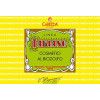



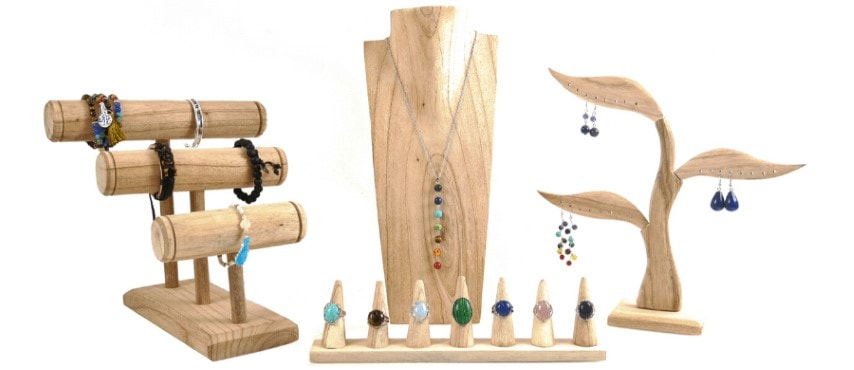

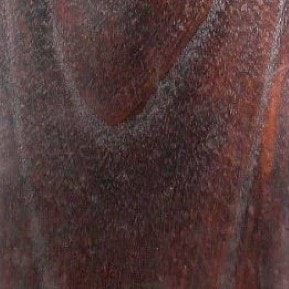
.JPG)
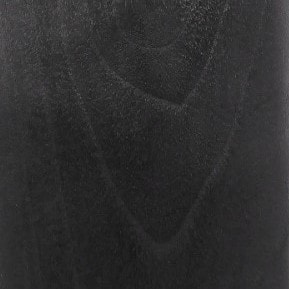

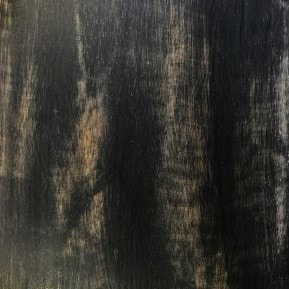




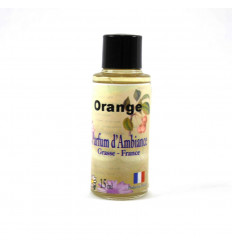





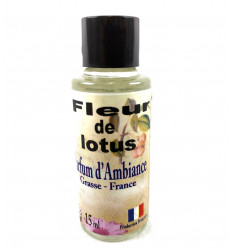





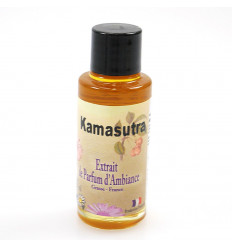









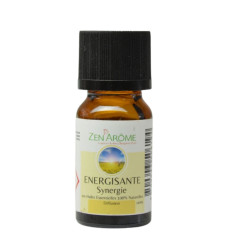
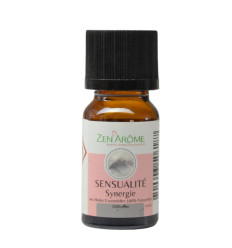



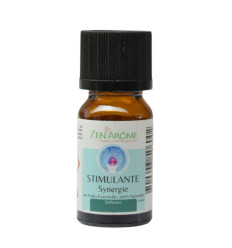

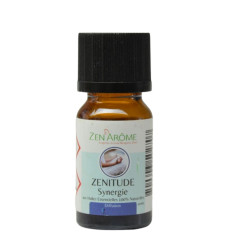



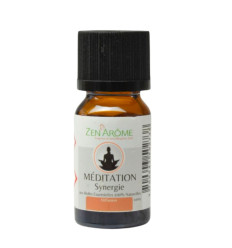

Comments (0)